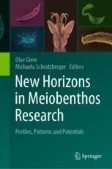Search
Search Results
-
Physiological and genetic regulation of anhydrobiosis in yeast cells
Anhydrobiosis is a state of living organisms during which their metabolism is reversibly delayed or suspended due to a high degree of dehydration....

-
Time-series transcriptomic screening of factors contributing to the cross-tolerance to UV radiation and anhydrobiosis in tardigrades
BackgroundTardigrades are microscopic animals that are capable of tolerating extreme environments by entering a desiccated state of suspended...

-
State of Cyanobacteria Arthrospira platensis and of Associated Microflora during Long-Term Storage in the State of Anhydrobiosis
Abstract —The biochemical composition of Arthrospira ( Spirulina ) platensis (Nordstedt) Gomont after long-term storage in the state of anhydrobiosis...

-
Mitochondrial alternative oxidase contributes to successful tardigrade anhydrobiosis
Anhydrobiosis can be described as an adaptation to lack of water that enables some organisms, including tardigrades, to survive extreme conditions,...

-
Anhydrobiosis in yeast: role of cortical endoplasmic reticulum protein Ist2 in Saccharomyces cerevisiae cells during dehydration and subsequent rehydration
Two Saccharomyces cerevisiae strains, BY4741 and BY4741-derived strain lacking the IST2 gene (ist2Δ), were used to characterise the possible role of...

-
Sexual dimorphism in the tardigrade Paramacrobiotus metropolitanus transcriptome
BackgroundIn gonochoristic animals, the sex determination pathway induces different morphological and behavioral features that can be observed...

-
Multiomics study of a heterotardigrade, Echinisicus testudo, suggests the possibility of convergent evolution of abundant heat-soluble proteins in Tardigrada
BackgroundMany limno-terrestrial tardigrades can enter an ametabolic state, known as anhydrobiosis, upon desiccation, in which the animals can...

-
The Aphelenchus avenae genome highlights evolutionary adaptation to desiccation
Some organisms can withstand complete body water loss (losing up to 99% of body water) and stay in ametabolic state for decades until rehydration,...

-
Anhydrobiosis in Non-conventional Yeasts
Anhydrobiosis is a unique state of living organisms that provides the possibility of surviving conditions of extreme heat and drought with temporary...
-
Tardigrade small heat shock proteins can limit desiccation-induced protein aggregation
Small heat shock proteins (sHSPs) are chaperones with well-characterized roles in heat stress, but potential roles for sHSPs in desiccation tolerance...

-

-
Convergent evolution of desiccation tolerance in grasses
Desiccation tolerance has evolved repeatedly in plants as an adaptation to survive extreme environments. Plants use similar biophysical and cellular...

-
Meiofauna—Adapted to Life at the Limits
Meiofauna are ubiquitous members of aquatic ecosystems worldwide. Some of them can thrive under boundary conditions that are challenging to most...
-
Ionizing radiation responses appear incidental to desiccation responses in the bdelloid rotifer Adineta vaga
BackgroundThe remarkable resistance to ionizing radiation found in anhydrobiotic organisms, such as some bacteria, tardigrades, and bdelloid rotifers...

-
Arthropods, nematodes, fungi, and bacteria associated with penguin carrion in Barton Peninsula, King George Island, Antarctica
Carrion decomposition contributes to the soil microbial community structure. This research aimed to identify the soil arthropod, nematode, bacterial,...

-
Introduction: The New Cryptogams
This textbook concerns a large fraction of the tree of life, the non-vascular oxygenic photoautotrophs.
-
Rotifers: Rotifera
Rotifers (wheel animals) are widespread throughout the world (Fig. 6.1). They comprise a remarkably diverse group concerning their form, shape and...
-
Stem and Bulb Nematodes in Agricultural Crops and Their Management by Biological and Biotechnological Methods
The stem and bulb nematode, Ditylenchus dipsaci is a voracious pathogen of crops and displays a broad host range. It has been designated a quarantine...
-
Trehalose and tardigrade CAHS proteins work synergistically to promote desiccation tolerance
Tardigrades are microscopic animals renowned for their ability to survive extreme desiccation. Unlike many desiccation-tolerant organisms that...

-
Resilience of Xanthoria parietina under Mars-like conditions: photosynthesis and oxidative stress response
Main conclusionXanthoria parietina survivability in Mars-like conditions was supported by water-lysis efficiency recovery and antioxidant content...

